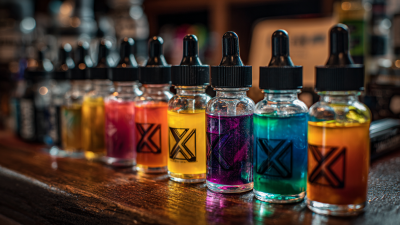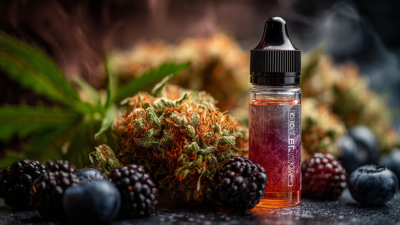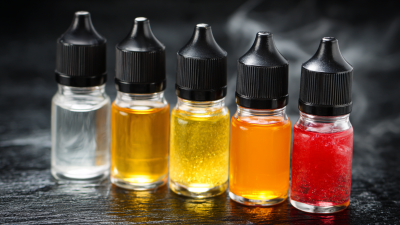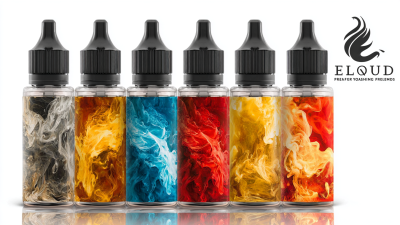

 The booming vaping industry has seen e-liquid flavorings take center stage, captivating enthusiasts with an array of tastes and aromas. According to a recent report by Grand View Research, the global e-liquid market is projected to reach $30.65 billion by 2025, driven largely by the growing popularity of flavored options. E-liquid flavorings serve not only to enhance the vaping experience but also to attract smokers seeking alternatives to traditional tobacco products.
The booming vaping industry has seen e-liquid flavorings take center stage, captivating enthusiasts with an array of tastes and aromas. According to a recent report by Grand View Research, the global e-liquid market is projected to reach $30.65 billion by 2025, driven largely by the growing popularity of flavored options. E-liquid flavorings serve not only to enhance the vaping experience but also to attract smokers seeking alternatives to traditional tobacco products.
However, as the market expands, understanding the science behind these flavorings becomes crucial for both safety and satisfaction. By delving into the components, creation, and regulatory aspects of e-liquid flavorings, we can better appreciate the artistry and complexity that elevate vaping from mere habit to a flavorful lifestyle choice for millions around the world.
The chemistry behind e-liquid flavorings plays a pivotal role in enhancing the vaping experience, significantly affecting the overall satisfaction of enthusiasts. E-liquids typically consist of a base of propylene glycol (PG) and vegetable glycerin (VG), which serve as the primary carriers for flavor compounds. According to a study published in "Tobacco Control", nearly 70% of vapers prioritize flavor as their primary reason for choosing e-liquids, highlighting its critical importance in the vaping industry.
Flavorings in e-liquids can be divided into natural and synthetic categories. Natural flavorings often come from essential oils or extracts, while synthetic flavors, which make up approximately 90% of the market, are designed to replicate the taste of various fruits, desserts, and candies. A report from the National Institute on Drug Abuse (NIDA) notes that certain synthetic compounds can pose health risks when heated and inhaled, necessitating rigorous testing and regulation to ensure consumer safety.
Understanding the specific ingredients used in these flavorings is essential for vapers who wish to make informed choices, particularly regarding the potential long-term impacts on health.
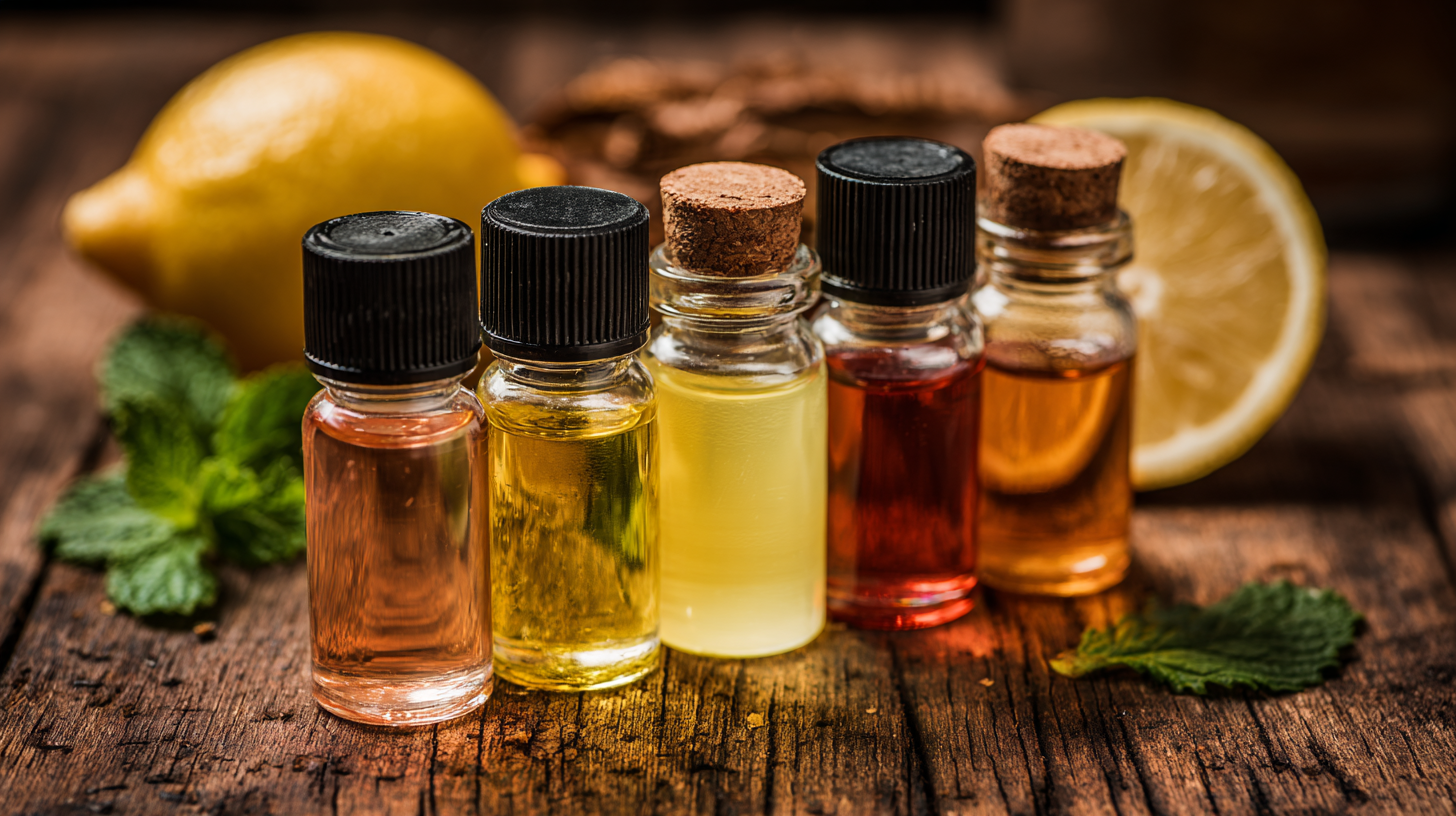 Understanding flavor profiles in e-liquids is essential for both new and experienced vapers. The primary categories include fruits, desserts, and menthols, each offering a unique sensory experience. Fruity flavors, ranging from sweet to tangy, often evoke vibrant summer notes, appealing to those seeking a refreshing vape. Popular fruit combinations might include berries, citrus, and tropical fruits, each bringing its own distinctive aroma and taste. The exploration of these flavors can enhance a vaper's experience, allowing for personalized preferences based on mood or setting.
Understanding flavor profiles in e-liquids is essential for both new and experienced vapers. The primary categories include fruits, desserts, and menthols, each offering a unique sensory experience. Fruity flavors, ranging from sweet to tangy, often evoke vibrant summer notes, appealing to those seeking a refreshing vape. Popular fruit combinations might include berries, citrus, and tropical fruits, each bringing its own distinctive aroma and taste. The exploration of these flavors can enhance a vaper's experience, allowing for personalized preferences based on mood or setting.
In contrast, dessert flavors provide a rich and indulgent vaping experience, reminiscent of favorite treats like cakes, cookies, and ice creams. These flavors often incorporate sweet notes and creamy undertones, creating a satisfying vape for those with a sweet tooth. Menthol flavors, on the other hand, introduce a cooling sensation that can be invigorating and refreshing, making them a popular choice among users looking for a revitalizing effect. As the vaping market continues to grow, these flavor profiles remain pivotal in driving consumer choices, with flavor being the most significant attribute influencing e-cigarette selection.
In recent years, the role of sweeteners and additives in vaping has garnered significant attention, particularly as the industry evolves to cater to diverse consumer preferences. Research indicates that some artificial sweeteners utilized in e-liquids can enhance the addictive qualities of vaping products. A study highlighted that popular disposable e-cigarettes contained potent, unregulated sweeteners, raising concerns about their long-term health effects and potential to create dependency similar to that of nicotine.
Furthermore, the chemistry behind these flavorings is essential to understanding their appeal. Sweeteners such as sucralose and neotame, while enhancing the taste profiles of e-liquids, may also interact with metal components during the heating process. This interaction could lead to the release of harmful substances, complicating the safety narrative surrounding vaping. As consumers increasingly gravitate towards sweeter flavor profiles, the vaping industry must navigate the balance between flavor enhancement and health implications, ensuring that enjoyment does not come at a significant risk to users' well-being.

Choosing the right e-liquid flavorings is crucial for an optimal vaping experience. The vast array of available flavors can be overwhelming, but understanding your preferences is key.
Start by considering the primary flavors you enjoy, whether they are fruity, dessert-like, or savory. It's essential to sample different combinations and brands to find the right balance that pleases your palate. Many vapers find that a mix of flavors can enhance the overall experience, blending sweet notes with a hint of tartness, for instance.
Another important factor to consider is the quality of the flavorings. Opt for e-liquids made with food-grade flavorings to ensure safety and enhance flavor purity. Additionally, pay attention to nicotine levels and VG/PG ratios, as they can influence the flavor intensity and throat hit.
Checking product reviews and seeking recommendations from fellow enthusiasts can provide insight into popular and well-regarded options. Ultimately, the perfect e-liquid flavoring is one that not only satisfies your taste buds but also complements the experience you seek in your vaping journey.
When exploring e-liquid flavorings, it's essential to be aware of safety considerations regarding the ingredients that can pose risks to your health. Many e-liquids contain added flavorings, but not all of them are suitable for inhalation. Propylene glycol and vegetable glycerin are commonly used bases, but certain flavoring agents, such as diacetyl, have been linked to serious respiratory conditions like "popcorn lung." Opting for e-liquids that clearly state "diacetyl-free" on their labels is a crucial step for vaping enthusiasts.
Another ingredient to watch out for is vitamin E acetate, commonly found in some cannabis products, which has been implicated in vaping-related lung injuries. It's vital to scrutinize the ingredient list of e-liquids and choose products from reputable brands that disclose their component sources. Always look for e-liquids that prioritize transparency with third-party testing to ensure safety.
**Tips**: When selecting e-liquids, check for certifications and lab results to confirm the absence of harmful substances. Start with lower concentrations of flavoring to gauge your body's reaction, and consider sticking to simpler flavor profiles to minimize exposure to unnecessary additives. Prioritizing quality over quantity can enhance your vaping experience while keeping health risks at bay.
| Ingredient | Potential Risks | Common Applications | Recommendation |
|---|---|---|---|
| Diacetyl | Linked to respiratory issues (e.g., "Popcorn Lung") | Used in buttery flavorings | Avoid |
| Acetyl Propionyl | Possible respiratory irritant | Creamy flavors, custards | Avoid |
| Propylene Glycol (PG) in high quantities | Can cause allergic reactions in some individuals | Base for e-liquids | Use cautiously |
| Sweeteners (e.g., Sucralose) | Can leave residue and affect coil life | Enhancing sweetness in flavors | Moderation recommended |
| Essential Oils | Not safe for inhalation | Natural flavorings | Avoid |

